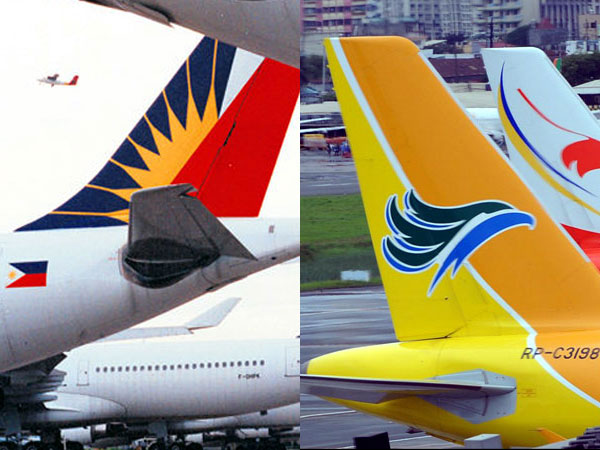
INQUIRER FILE PHOTO
Travelers will be paying higher airfares starting July 1 as surging fuel prices continue to raise the operating costs of many industries, from manufacturing to transportation.
The Civil Aeronautics Board (CAB) on Wednesday issued a resolution raising the fuel surcharge bracket to level 11 for the month of July from June’s level 7.
Local airlines earlier filed applications to implement higher fuel surcharges to cover their increasing fuel expenses.
Fuel surcharges are additional fees collected by airlines to help them recover fuel costs. These are separate from the base fare, which is the actual amount paid by the passenger for a seat.
Under level 11, airlines starting next month are allowed to collect fuel charges ranging from P355 to P1,038 per passenger for domestic flights and P1,172.07 to P8,714.84 for international flights. Level 7 sets fuel surcharges at P219 to P739 for domestic flights and P722.71 to P5,373.69 for international flights.
Under the higher rates, passengers from Manila flying to Bacolod, Cebu and Puerto Princesa will be charged P706 in fuel surcharge. Flights from Manila to Siargao, Tagbilaran and Cagayan will have a surcharge of P899 per individual, while passengers going to Zamboanga, Cotabato and Davao from Manila need to prepare to pay an additional P967.
Flights from the Philippines to Taiwan, Hong Kong, Vietnam, Cambodia and Brunei will have a fuel surcharge of P1,172.07. Those going to Singapore, Thailand, Malaysia and Guam should be ready to pay an additional P1,620.99, while the applicable surcharge for flights to North America, United Kingdom and the Netherlands amount to P8,299.85.
Strong demand
Budget carriers AirAsia Philippines and Cebu Pacific told the Inquirer that they have applied to implement level 11 fuel surcharges, while Philippine Airlines (PAL) only said: “we will keep you posted.”
“Cebu Pacific and other airlines are grappling with higher fuel costs, which necessitate the implementation of the fuel surcharge,” Cebu Pacific chief commercial officer Xander Lao said.Air Asia Philippines spokesperson Steve Dailisan said the carrier “assures its guests that it shall maintain friendly and attainable prices in its base fares regardless of the volatility in fuel and market prices.”
Airlines earlier expressed optimism about air travel despite the higher fuel surcharges due to the so-called revenge spending (phenomenon wherein people spend excessively after a period when they had limited opportunities to spend, such as the COVID-19 pandemic) and various seat sale promos offered by airlines.
“We continue to see strong demand for air travel and Cebu Pacific will keep air travel affordable and accessible through our seat sale activities,” Lao added.
Dailisan noted that most of the booked flights for AirAsia were to leisure destinations, including Caticlan, Cebu, Kalibo, Tagbilaran and Puerto Princesa.
Higher cargo costs
In its recent resolution, the CAB also expanded the passenger fuel surcharge matrix to level 20, under which airlines are allowed to charge P661 to P1,933 for domestic flights and P2,183.11 to P16,232.44 for international flights.
The regulator also crafted a fuel surcharge matrix for cargo deliveries, amounting to P0.19 to P9.94 per kilo for local flights and P0.64 to P83.45 for international flights.
Under level 11, fuel surcharge for cargo per kg amounts to P1.82 to P5.34 for domestic flights and P6.03 to P44.80 for international flights.
“A cargo fuel surcharge matrix may be provided given that the volatility of jet fuel prices also affect cargo operations as a component of combination service wherein cargo is carried in the belly-hold capacity of a passenger aircraft,” the CAB explained.
Local airlines have been increasing the number of flights to other countries with the returning demand for air mobility with the reopening of international borders as the pandemic eases.
More flights to Indonesia, Dubai, Bangkok, Kuala Lumpur, Hanoi, Ho Chi Minh, Osaka and Seoul, among others, will soon be available to passengers from Manila.